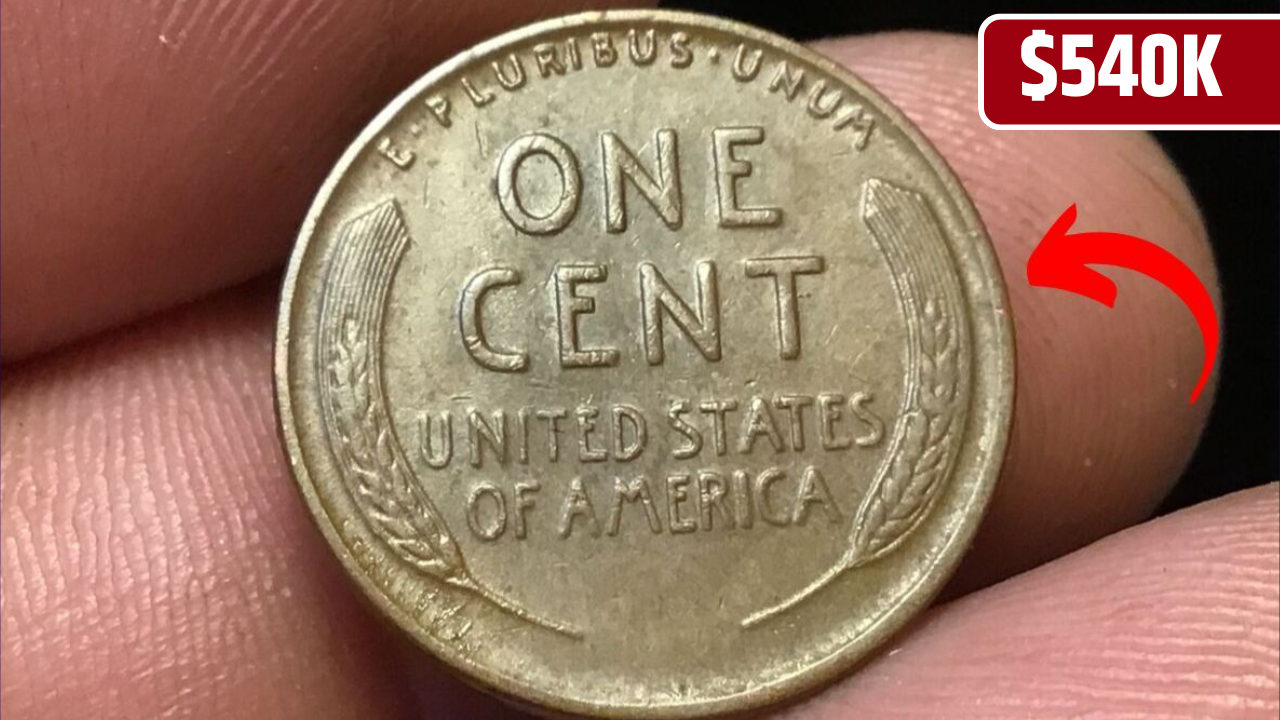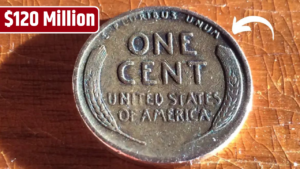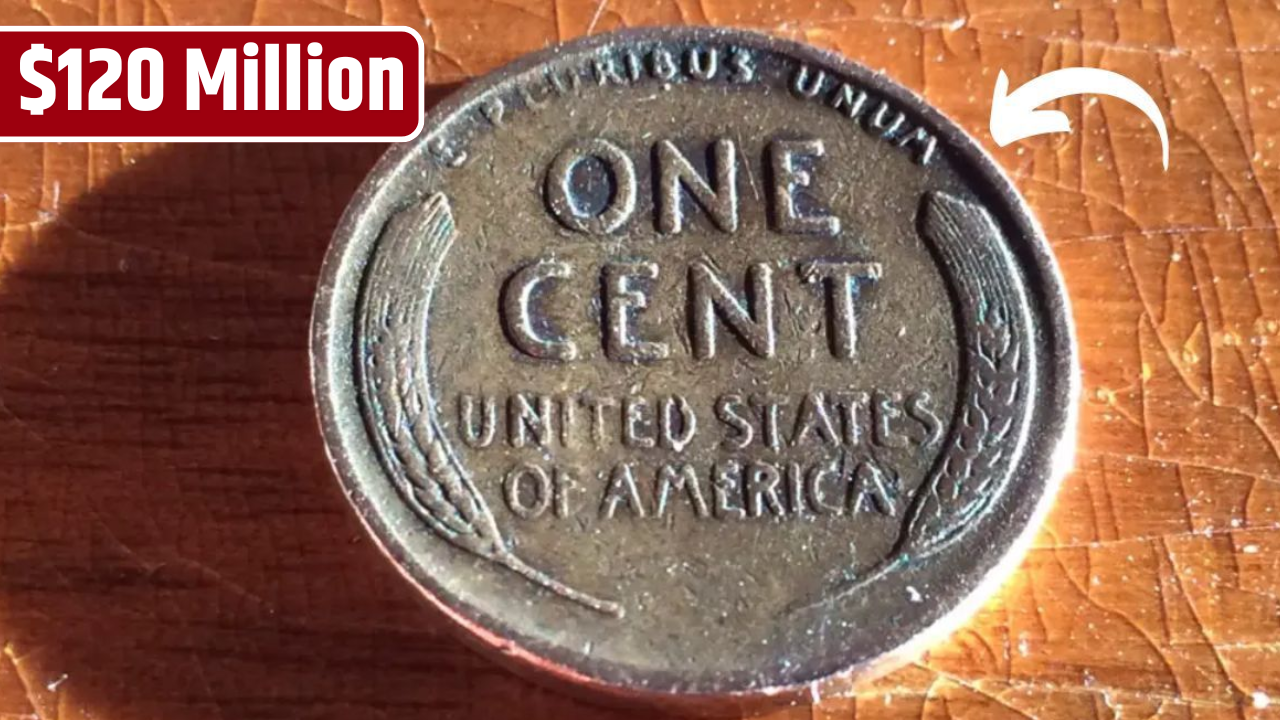The Lincoln Wheat Penny is a reminder that extraordinary value can sometimes be hidden in the most ordinary places. While most people view a penny as little more than pocket change, certain rare specimens—like the 1943 copper penny—have fetched up to $500,000 at auction. These coins are not only prized for their rarity but also for the stories they carry from pivotal moments in American history. And what’s most intriguing? Some of these treasures may still be out there—buried in old jars, tucked away in basements, or mixed into everyday change.
A Historic Design with Lasting Appeal
Introduced in 1909 to mark the centennial of Abraham Lincoln’s birth, the Lincoln Wheat Penny broke new ground. It was the first time a real person, let alone a president, appeared on a U.S. coin. Designed by Victor David Brenner, the obverse features Lincoln’s dignified profile, while the reverse displayed two stylized wheat stalks—symbolizing prosperity.
This wheat design ran from 1909 to 1958, after which it was replaced with the now-familiar Lincoln Memorial design. But the Wheat Penny remains a collector favorite due to its classic look, historical significance, and the potential for rare varieties.
What Makes Some Pennies Worth Hundreds of Thousands?
While most Lincoln Wheat Pennies are worth just a few cents to a few dollars, several stand out due to rarity, mint errors, or limited production runs. Here are some of the most valuable:
| Coin Variety | Notable Features | Estimated Value (High Grade) |
|---|---|---|
| 1943 Copper Penny | Struck on copper by mistake | Up to $500,000+ |
| 1909-S VDB | San Francisco mint, designer’s initials | $700 – $100,000+ |
| 1914-D | Low mintage from Denver | $200 – $13,000+ |
| 1922 “Plain” | No visible mint mark | $500 – $20,000+ |
| 1931-S | Scarce San Francisco issue | $100 – $4,000+ |
The 1943 Copper Penny: A Wartime Error Turned Treasure
During World War II, copper was reserved for the military, so the U.S. Mint produced pennies from zinc-coated steel in 1943. However, a small number of copper blanks from 1942 mistakenly got used. These error coins—now known as 1943 copper pennies—are among the rarest and most valuable American coins.
To test if your 1943 penny is the real deal, use a magnet. Steel versions will stick; copper ones won’t. If it doesn’t stick, it’s worth getting authenticated immediately.
How to Spot a Valuable Lincoln Wheat Penny
You don’t need to be a professional numismatist to start looking for valuable Wheat Pennies. Here’s what to keep an eye out for:
- Date and Mint Mark: Older coins, especially pre-1940, are generally more desirable. Look for mint marks below the date: “S” for San Francisco, “D” for Denver.
- Unique Characteristics: Watch for missing mint marks (like the 1922 “plain”) or design anomalies.
- Condition: Coins in pristine, uncirculated condition are far more valuable than worn ones. Even rare coins lose significant value if heavily circulated.
- Metal Composition: The material matters. For instance, a 1943 copper penny is drastically more valuable than its steel counterpart.
Authentication and Handling: Don’t Ruin Your Find
If you think you’ve found a valuable coin, don’t clean it or try to improve its appearance—it can destroy its value. Handle it by the edges, and place it in a coin holder or soft pouch.
For verification, send the coin to a reputable grading service like:
- PCGS (Professional Coin Grading Service)
- NGC (Numismatic Guaranty Corporation)
These services can authenticate the coin, grade its condition, and even encapsulate it in tamper-proof holders that enhance marketability and protection.
Where Might These Rare Pennies Be Found?
While it’s rare, valuable Lincoln Wheat Pennies still turn up in surprising places:
- Old coin jars and piggy banks
- Estate collections
- Rolls of pennies from banks
- Garage sales and flea markets
- Inherited coin collections
The thrill of possibly discovering a valuable coin makes penny hunting a fun and potentially rewarding hobby.
Why Coin Collecting Continues to Captivate
Coin collecting offers more than the chance of a big payout. It connects enthusiasts to history, art, and the stories of everyday people. The Lincoln Wheat Penny, in particular, resonates as a symbol of American heritage—carrying the face of a revered president, minted through the Great Depression, two World Wars, and the rise of modern America.
Even if you never find a six-figure penny, the search itself can be a fascinating and fulfilling journey.
The tale of the $540,000 Lincoln Wheat Penny is more than just a story of luck—it’s a reminder of the history and value that can lie hidden in plain sight. As coin collectors know well, the next great discovery might just be sitting unnoticed in a jar or resting in the palm of your hand. Whether you’re a seasoned numismatist or just curious, every penny you pick up holds a bit of history—and maybe even a hidden fortune.
FAQs
What makes the 1943 copper penny so valuable?
It was a minting error during WWII when pennies were supposed to be made from steel. A few copper blanks were accidentally used, creating a rare and highly sought-after coin.
How can I tell if I have a valuable Lincoln Wheat Penny?
Check the date and mint mark. If it’s from a key year (like 1909-S VDB or 1943 copper), in great condition, or has a notable error, it could be worth a lot.
Are all old pennies worth money?
No. While many Wheat Pennies have collector value, only rare dates, mint errors, or coins in exceptional condition are worth significant amounts.
Should I clean an old coin before selling it?
No. Cleaning can reduce a coin’s value dramatically. Always consult a professional before doing anything that might alter the coin.
Where can I get a coin appraised?
Reputable coin dealers or grading services like PCGS or NGC can authenticate and appraise your coin accurately.









